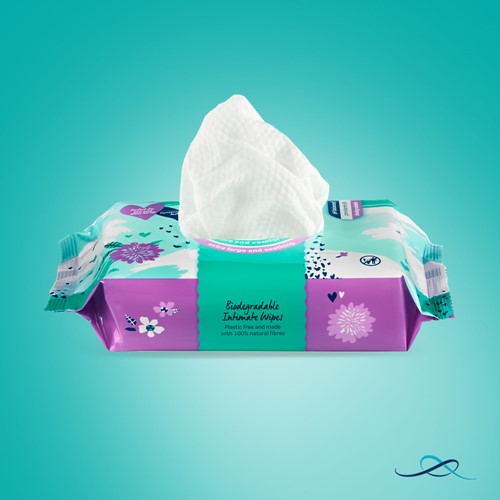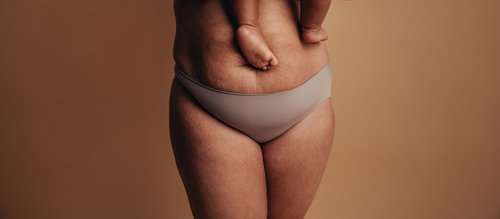The weeks after birth are a time for recovery and healing as well as navigating the huge adjustment to motherhood, as you learn to bond with your baby and understand its needs.
Written by Lara Taylor, Specialist Midwife
You’ll experience a huge range of emotions with the responsibility often being overwhelming at times. This tiny human is totally dependent on you for everything, and when the time comes to take baby home from hospital or for midwives to leave you after your home birth, you most probably won’t feel like you’re ready for it.
It’s a time when you naturally put your newborn first with little thought for yourself or your recovery, but I can honestly say, you’re just as important! We’re often unaware of the enormous changes following birth that happen weeks and even months later, but understanding these changes are so important for your recuperation. So, let’s look deeper into those early days following birth with advice and tips to aid your recovery, ensuring you feel more confident and empowered as you navigate the joys and challenges of early motherhood.
Being prepared for your baby’s arrival is so much more than buying equipment and packing your hospital bag. It’s not only preparing yourself mentally for life with a new baby but being aware of the physical changes and their impact on your recovery. So, for me there’s nothing more important for the ladies in my care than to have a ‘Postnatal Plan’. Having something to refer to, when the adjustment, tiredness and new responsibility becomes a little too much.
Support from friends or family is crucial in those first weeks, and often those close to you will believe that taking the baby away and giving you time to rest is how they can best be of use, but that really isn’t something I recommend. Ideally your job for the first few weeks should be to feed yourself and your baby and sleep…yes really, that’s it! Not only is this important for bonding and attachment, to help establish feeding and to aid baby’s brain development, but for your mental health and recovery too!
Family and friends can help in so many other ways, by preparing meals, washing, keeping on top of your housework, shopping, school runs and helping with older siblings…anything that you would normally do on a day-to-day basis. Make this part of your ‘Postnatal Plan’ speaking to them about this and delegating these responsibilities early on, just so they understand what you need and what you don’t! And remember asking for help is not a weakness, it’s a sign of self-awareness, recognising you and your baby’s well-being has to come first.

It’s a really good idea to prepare some meals and snacks in advance or ask family and friends to do this for you with food you can take out of the freezer the night before you need it. I’d suggest making soups and stews aiming for meals that are easily digestible. Your digestive system takes a while to adjust after birth, and you will be resting and less mobile.
Don’t be afraid to set boundaries and say ‘No’ to visitors. Yes, I know everyone will be eager to see you and your new addition, but the last thing you want to be doing is hosting, and it’s crucial to prioritise your own needs and the needs of your baby during this time of adjustment.
If you’re family and local support network is limited, consider a Postnatal Doula to help with the transition to parenthood. Not only will they support you with caring for your baby, but they’re often happy to help with the household tasks and will do just what’s needed for as long as you need.
Carry out research to see what other local support is available for you, making a list of different professionals and networks should you need them. Consider a Feeding support specialist, or a Private Midwife, or even a baby cranial osteopath to name a few of the services I recommend. Your local Community Midwife may be able to point you in the direction of local support services too and having extra support really does make a difference to the start of your parenting journey.
There are many physical changes post pregnancy as your body recovers from pregnancy and birth, with some being instantly noticeable. Stretch marks on your tummy, thighs and bottom, may be one of the first you notice and whilst they will never completely go away, they do fade over time.
Labour has been likened to running a marathon, so it goes without saying you’re going to be feeling tired and achy for the first couple of days, as you’ve probably used muscles you haven’t used for a long time…or ever! Experiencing lower back pain, stiffness in the shoulders, groin or hip area are very common and should naturally disappear after a few days and as you continue to rest.
Other types of discomfort you may experience are ‘afterpains’, which are abdominal cramps and can feel similar to a contraction. This is because the body is working hard to contract your uterus not only back into the pelvic region but also back to its pre-pregnancy size, and that’s a lot of work, it can take about 6-8 weeks for your uterus to return to its pre-pregnancy size, but afterpains generally subside after a week or so. And yes, you may feel them more intensely if you’re breastfeeding, that’s due to that wonderful hormone Oxytocin, not only responsible for your milk let down!
When experiencing ‘afterpains’ you may notice a little gush of blood at the same time which is nothing to worry about. Bleeding after pregnancy, also known as Lochia, will happen immediately after birth and will last around 14 days. It will resemble a heavy period for the first 3-4 days being dark red in colour. As time goes on it will become lighter changing to a pinkish brown colour and then around 10 days will take on a whitish yellow colour. It will become lighter as time goes on, but if you do have a sudden red bleed again, it’s really not unusual. It may just be because you’ve not rested enough! Your body is very clever in telling you when you’re over doing things. And just to point out that you may bleed a little less in the first day or so if you’ve had a caesarean section.
A Caesarean section is major abdominal surgery and needs to treated as such when thinking about your recovery, so listening to your body is a priority. Your movement will be limited and pain intense at times so it’s important to make sure you have pain relief at home and take it regularly for the first week. Use a pillow to support your tummy when moving or coughing and also to support baby when you’re feeding. Oh, and don’t lift anything heavier than your baby!
If you’ve given birth vaginally, you’ll most likely feel discomfort and soreness to your perineum, especially if you’ve suffered tearing or had an episiotomy. It’s important to make sure that your midwife checks your perineum when they visit but there are things you can do to help your recovery: when sitting use a pillow or doughnut shaped cushion, take paracetamol to help with the pain and ibuprofen to help reduce inflammation. Using a cold pack will help with this and you could also place a pack of Maternity pads or the Lil-Lets Maternity wipes in the fridge to cleanse, soothe and cool this area! It can take around 6 weeks to heal so make sure you take a look using a mirror, so you can see the improvement as well as notice if there are any issues, such as an infection.

If you’ve given birth vaginally, you’ll most likely feel discomfort and soreness to your perineum, especially if you’ve suffered tearing or had an episiotomy.
It’s important to make sure that your midwife checks your perineum when they visit but there are things you can do to help your recovery: when sitting use a pillow or doughnut shaped cushion, take paracetamol to help with the pain and ibuprofen to help reduce inflammation. Using a cold pack will help with this and you could also place a pack of Maternity pads or the Lil-Lets Maternity wipes in the fridge to cleanse, soothe and cool this area! It can take around 6 weeks to heal so make sure you take a look using a mirror, so you can see the improvement as well as notice if there are any issues, such as an infection.
Lil-Lets Maternity Intimate WipesUrinary incontinence can happen after giving birth and can be caused by the pressure on the pelvic floor muscles during pregnancy, or when your baby is passing through the birth canal It generally resolves itself after the first few weeks, however, if you’re experiencing this at 6 weeks postpartum, I would strongly recommend seeing your doctor, who may recommend visiting a pelvic health physiotherapist.
Postnatal constipation is quite common and opening your bowels for the first time after birth is always a worry and may not happen for a few days. There are several things that can contribute to this, such as lack of water and fibre leading up to, and during birth, lack of movement or even medication used during childbirth. You may also be worried about stitches opening….which I may add is very rare but there are things you can do to help. Keeping hydrated and ensuring you have a fibre rich diet is a great place to start, but also using a foot stool can help, as it simulates a squat position and straightens the colon, making it easier to pass stools. It can also help prevent haemorrhoids (piles) which can be common during pregnancy and after birth.
You’ll notice colostrum appearing at the nipple soon after birth, and you may notice it happening when baby is crying or when baby is close. The breasts become swollen and engorged around day 3 and this is a sign your milk is transitioning from colostrum to mature milk which by around day 14 is available for your baby.
Engorgement can feel uncomfortable with your breasts feeling heavy, warm, and sensitive so to help with the discomfort, here’s a few things to try which may help:
If you are feeding by formula, then leave your breasts well alone at this time. The body will be aware that you're not feeding, and the milk will soon reabsorb back into the body.
Lara’s Top Tip: Firstly, ensure you have a well fitted and supportive bra. Use Lil-Lets Breast pads to soak up any leaking in between feeds and use a collection cup on the opposite breast to the one you're feeding from, so you don't lose any of the precious milk.
You may have noticed towards the end of pregnancy your ankles and legs starting to swell, which can feel uncomfortable I know. This is because our blood volume increases during pregnancy, and our veins dilate to accommodate this change. It can take to time return to its pre-pregnancy state and to help with any discomfort, elevate your legs wherever possible and reduce the amount of salt you have in your diet. You can also use compression stockings, which if you’ve had a Caesarean section, you should have upon discharge from hospital.
This blood volume increase can put pressure on your veins, resulting for some in varicose veins. If this is you, always get them checked by your health care provider but be reassured that they usually go within about 12 weeks.
Many of the changes I’ve mentioned here are completely normal, but there are some symptoms that could mean there’s a potential health problem that needs investigation.
Look out for these and contact your health provider or maternity unit if you notice any of these symptoms:

I can’t stress enough that your postpartum body can take time to adjust and recover so please don’t place too much pressure on yourself and how you look. Social media is full of unrealistic images, as well as promoting the totally unrealistic ‘bouncing back’ after birth body! Of course, you’re going to look and feel differently, after all your body has done an amazing job over the last 9 months!! So please don’t focus on getting into your pre-pregnancy clothes, continue to listen to, and trust your body, giving it time to recover at your own pace.
Links for support
https://www.nhs.uk/conditions/baby/support-and-services/your-post-pregnancy-body/